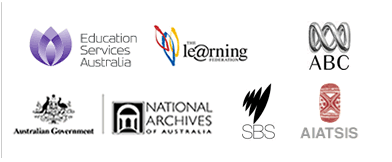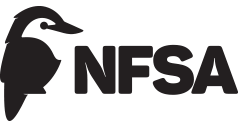Original classification rating: PG.
This clip chosen to be PG
Clip description
Molony is driving through the suburbs of Canberra talking to interviewer Robin Hughes about how he went about finding a job after so many years in the church. Without a reference from his former colleagues, and too proud to ask and risk a refusal, he decided to begin his working life in a factory.
Curator’s notes
Chequerboard began in 1967 and continued for nine years until 1977. The program was always thoroughly researched to find people with compelling stories that told something about Australian society. The series talked extensively to academics and other social commentators about trends in society from which the filmmakers would select the issues to be explored. They would then use their skilled team of researchers to find people willing to tell their own story in their own words. The series developed its own ethical guidelines including a discussion with the interviewee to ensure that they gave careful thought to how the program would be seen by their family and community.
Filming Molony as he goes about his daily life, instead of in the studio, was an innovative method of filming at the time, known as 'observational’ or 'fly-on-the-wall’. Chequerboard was responsible for bringing this new style of documentary into Australian living rooms. It very effectively creates a sense of contact with the interviewee. Also here the producer has chosen to set this part of the interview driving through Molony’s home suburb, so we get a good look at the environment he lives in, rather than a sterile studio set. Although this convention became very common later, it was innovative at the time, and contributed to the wide appeal of Chequerboard.
Thanks to the generosity of the rights holders, we are able to offer Getting a job from the television program Chequerboard – Too Much For Molony as a high quality video download.
To play the downloadable video, you need QuickTime 7.0, VLC, or similar.
You must read and agree to the following terms and conditions before downloading the clip:
Downloadable Video – FOR EDUCATIONAL CRITICISM AND REVIEW PURPOSES ONLY
This clip is available for download for the limited purpose of criticism and review in an educational context. You must obtain permission from editorial@aso.gov.au for all other purposes for use of this material.
Terms & Conditions
australianscreen is produced by the National Film and Sound Archive. By using the website you agree to comply with the terms and conditions described here and elsewhere on this site. The NFSA may amend the 'Conditions of Use’ from time to time without notice.
All materials on the site, including but not limited to text, video clips, audio clips, designs, logos, illustrations and still images, are protected by the Copyright Laws of Australia and international conventions. ALL rights are reserved.
You must read and agree to the following terms and conditions before downloading this clip:
When you access ABC materials on australianscreen you agree that:
- You may download this clip to assist your information, criticism and review purposes in conjunction with viewing this website only;
- Downloading this clip for purposes other than criticism and review is Prohibited;
- Downloading for purposes other than non-commercial educational uses is Prohibited;
- Downloading this clip in association with any commercial purpose is Prohibited;
The National Film and Sound Archive’s permission must be sought to amend any information in the materials, unless otherwise stated in notices throughout the Site.
ANY UNAUTHORISED USE OF MATERIAL ON THIS SITE MAY RESULT IN CIVIL AND CRIMINAL LIABILITY.
This clip is available in the following configurations:
| File name | Size | Quality | Suitability |
|
cheqtoom2_pr.mp4
|
Large: 14.8MB |
High |
Optimised for full-screen display on a fast computer. |
|
cheqtoom2_bb.mp4
|
Medium: 7.0MB |
Medium |
Can be displayed full screen. Also suitable for video iPods. |
Right-click on the links above to download video files to your computer.
Thanks to the generosity of the rights holders, we are able to offer this clip in an embeddable format for personal or non-commercial educational use in full form on your own website or your own blog.
You must read and agree to the following terms and conditions before embedding the clip:
Downloadable Video – FOR EDUCATIONAL CRITICISM AND REVIEW PURPOSES ONLY
This clip is available for download for the limited purpose of criticism and review in an educational context. You must obtain permission from editorial@aso.gov.au for all other purposes for use of this material.
Terms & Conditions
australianscreen is produced by the National Film and Sound Archive. By using the website you agree to comply with the terms and conditions described here and elsewhere on this site. The NFSA may amend the 'Conditions of Use’ from time to time without notice.
All materials on the site, including but not limited to text, video clips, audio clips, designs, logos, illustrations and still images, are protected by the Copyright Laws of Australia and international conventions. ALL rights are reserved.
You must read and agree to the following terms and conditions before downloading this clip:
When you access ABC materials on australianscreen you agree that:
- You may download this clip to assist your information, criticism and review purposes in conjunction with viewing this website only;
- Downloading this clip for purposes other than criticism and review is Prohibited;
- Downloading for purposes other than non-commercial educational uses is Prohibited;
- Downloading this clip in association with any commercial purpose is Prohibited;
The National Film and Sound Archive’s permission must be sought to amend any information in the materials, unless otherwise stated in notices throughout the Site.
ANY UNAUTHORISED USE OF MATERIAL ON THIS SITE MAY RESULT IN CIVIL AND CRIMINAL LIABILITY.
Copy and paste the following code into your own web page to embed this clip:



 Share
Share



